Hey all,
it's me, David, and I'm back again with a small step-by-step article.This time it's basing time. Some of you might have seen the pics of the little vignette that includes two 1/72 figures I built together with Udo Spreng as a present for a friend:
The whole process can be broken down into six parts:
- Selecting the plinth
- Preparing the plinth 1
- Building the groundwork
- Preparing the plinth 2
- Painting
- Details, vegetation and clean-up
0. My personal "Three Golden Base-building Principles"
1. Selecting the plinth
I started constructing the base by selecting a plinth of the right size and shape. I browsed through my collection of plinths (since I like my plinths simple, and often cut, or break off parts of the plinth, most plinths in my collection are simply cut-offs of beechwood lathes) and checked which one might be good for the. I had a second set of the minis that were supposed to go onto the base, which I used for a few mock-ups to get a feel for the necessary size, both in terms of the area of the base surface as well as in terms of the plinth height.In this, I follow my "second golden rule" of as large as necessary, but as small as possible. In terms of area, the base has to be large enough to provide space for everything you want to include -- most importantly, the mini(s) you want to have in the center of attention. Also, you want to have sufficient space to give the viewer a good feeling for the place the scene you are depicting is occuring. At the same time the area should be not so large that the figures get lost. I find that a smaller surface area helps in making a given scene dramatic and dynamic. In terms of height, the plinth should give the feeling that there is a nice balance between the height of the plinth and the area of the plinth, the height of what's on the base (e.g., walls, trees, bushes, etc) and the height of the minis. Again, I tend to prefer a smaller height, as high plinths often give the feeling of imbalance. Often the Golden Ratio can help for a first approximation of plinth height and area. See this Wikipedia article for more on the Golden Ratio, how to calculate it and why us human beings tend to find things that follow the Golden Ratio pleasing. But keep in mind that the Golde Ratio should only work as a first approximation. Use it to get a first feel for the plinth sizes, and then see where this takes you.
While most of my bases are created on square plinths, for this vignette I liked the idea of a round plinth as it gives a more immediate feeling to the scene and invites the viewer a bit more than a rectangular plinth to turn the vignette around and watch it from many angles. However, I did not have a lot of round plinths at home, and the one below definitely was too small in terms of area: both hoplites almost stand on each other's toes, there is too little space to showcase the environment.
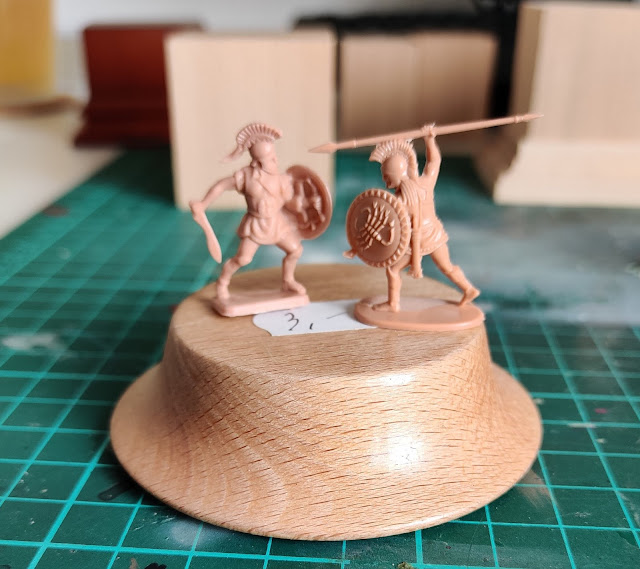 |
| First test plinth: too low, too small area |
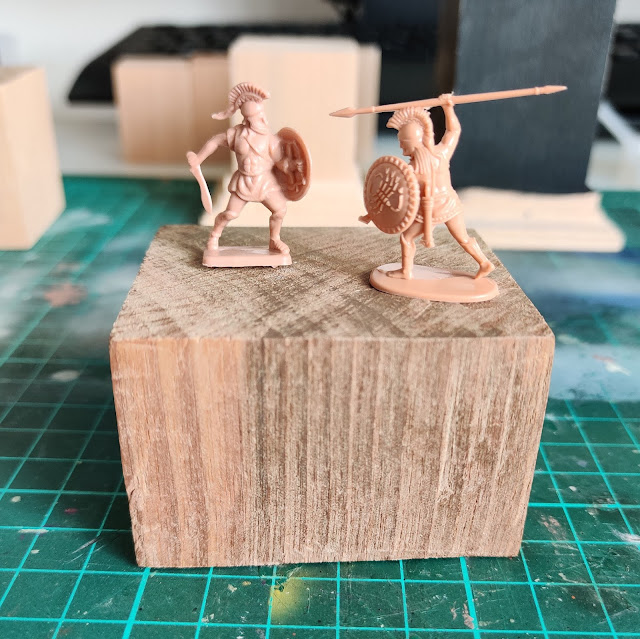 |
| Second test plinth: too angular, too blocky, to much space left and right. |
So, I asked my good friend Jan whether he had a fitting plinth: a round piece of wood, about 5.5 cm diameter and about 7 cm high (which would be much lower than the Golden Ratio, which would require a height of about 9 cm if the diameter was the "minor"). And: he had such a piece of wood (6 cm diameter, which was great, however). I saw, however, that 7 cm was still too tall - the minis were feeling lost (again, no pics, sadly - sorry about that). So Jan was so kind and cut a bit off the plinth, such that is was the perfect height.
2. Preparing the plinth 1
While I now had a plinth of the perfect size in terms of height, it was still too large in terms of area. I needed the 5.5 or 6 cm diameter to fit the minis standing opposite each other, with sufficient space between them and the sides of the plinth. But, since they are standing with their respective left feet forward, I did not need much space left and right of the minis. That area would just be empty space. So, I decided to cut some parts of the plinth away, namely about half of the area, from about half of the height of the plinth upward: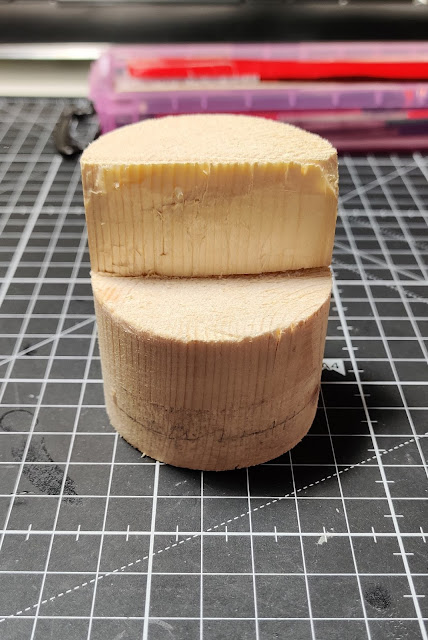 |
| Cutting half of the plinth's upper half away... |
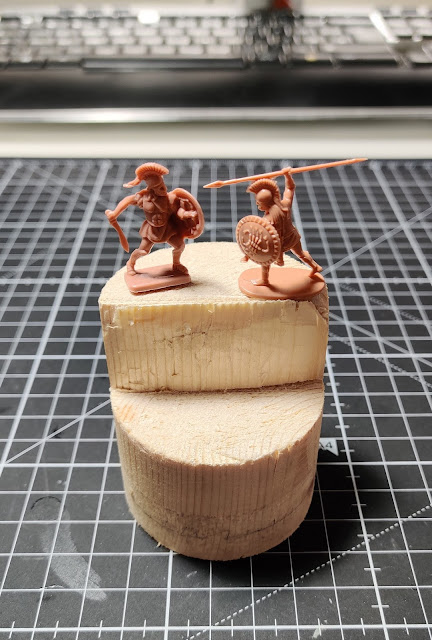 |
| ... and testing the look and feel of the plinth with the minis |
3. Building the groundwork
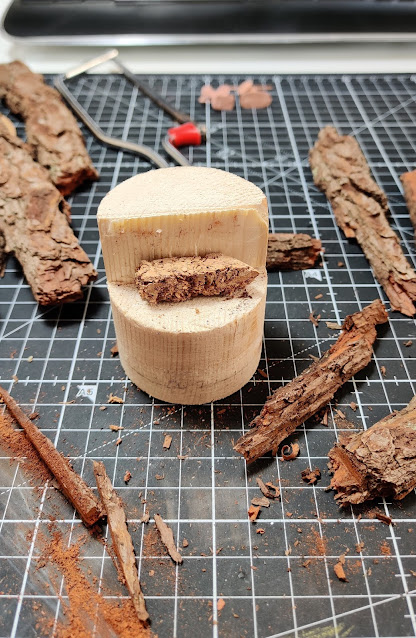 |
| A piece of cork coaster for some volume... |
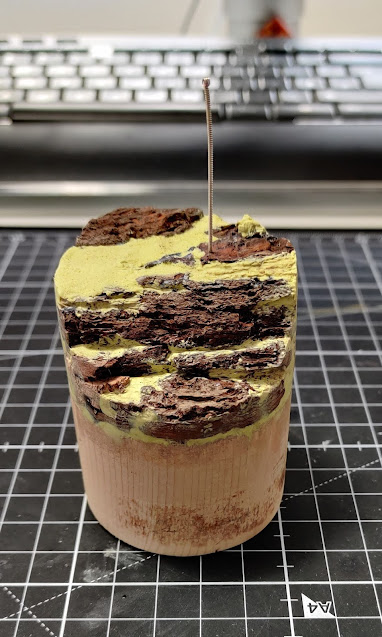 |
| And the sandy surfaces are done. Note the acupuncture needle I stuck into the base. I do that to mark the hole I drilled for one of the figures |
4. Preparing the plinth 2
One problem resulting from the slightly improvised plinth selection was that the wood was not perfectly smooth. Rather, one could see and feel the wavy wood structure. In addition, there was residue of some kind of sticky tape aound the lower part of the plinth. While one could argue that this gave the plinth some character, it would not be nice later on, when I would paint the plinth black. I prefer to have my plinths as smooth and unassuming as possible in order not to draw too much focus from the actual base and miniature work.
So, I had to sand the plinth smooth. However, the grooves in the wood were rather deep, so I made a mix of Milliput and water, brushed it onto the plinth (all around, nice and even) and let it cure. In order to speed up that process, I put the whole thing into the oven for about half an hour at 60 degrees centigrade - a trick I learned from my jungle brother Hansrainer; thanks for that! Then, I sanded the plinth - and repeated this whole processes for a total of three iterations. This gave me a nice and even surface, almost without any imperfections.
5. Painting
And on to painting! The first step in the painting process was, as always, priming the base, following the trusted 2K priming method. Next to laying the foundation and giving the actual colors a good "grip", for me 2K priming always has something magical: for the first time during the process everything comes together to give a coherent picture. In addition, priming also is the moment of truth as it shows whether the plinth is nice and smooth - any imperfections would be visible now, even though they might not have been obvious in the previous steps.
Next came the shadows. I added a bit of VMC Neutral Grey into the stone color and slapped it onto the lower parts of the rocky cliff-face and into the crevices, while the previous stone color was still wet (check this article for an in-depth explanation of the wet-in-wet technique):
Next would be highlights to be applied on the top of the rocks. For that I used VMC Ivory and just mixed it, wet-in-wet, into the stone color:
Next, I added color on the sandy areas, using VMC Dark Sand:
Then I added a few, controlled washes of Army Painter Strong Tone Ink to give the sand a bit more depth.
I continued to add Strong Tone washes, very controlled and targeted, onto the sand and to the lower parts and into the crevices of the rocks, to further increase contrast and give more depth:
Once I was happy with the shadows, I went back to bring out the midtones and highlights a bit more, further strengthening contrasts by carefully going over the surfaces again with the lighter colors: first the midtones and base colors (Stone Grey and Dark Sand), then highlighting both sand and rocks with Ivory. For this, I used both dry-brushing (especially for the sand) and "normal", detailed brushwork to bring out the edges of the rocks:
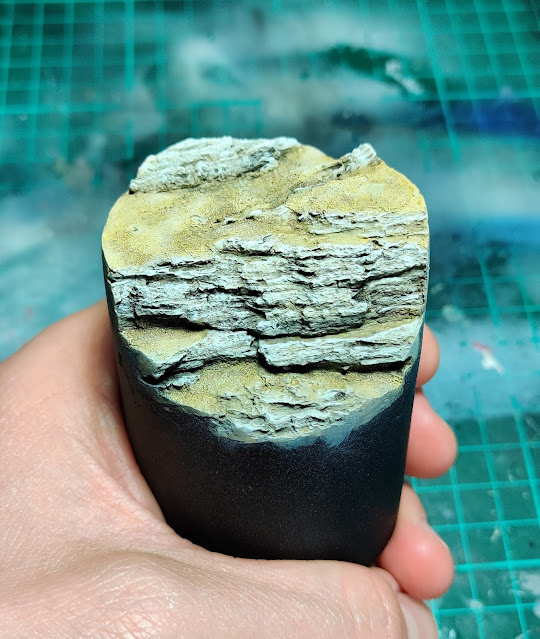 |
| Basic painting done. Ready for the final steps. |
6. Details, vegetation and clean-up
Now, I was closing in on the finish-line. Before I would be able to continue, I needed to see how the scene looked like with the figures. So I carefully glued them to their spots, using super-glue. While the super-glue was at hand, I also added a few "stones" (i.e., little pieces of cork) onto the sandy areas. Normally I do that much earlier in the process, during the creation of the sandy areas - but this time I just forgot about that and had to do it now. I also glued a few micro-tufts of dry grass to some selected areas. And it was time to get take it all in and decide what to do next:
Overall, I was quite happy with the state of the base now. The cork stones had to be painted, of course, and the grass tufts had to be integrated into the scene, as well. I decided not to add a large green bush to the scene, as I felt that this would take too much focus from the two minis. However, the micro-tufts were a bit too uniform for my taste, so I added a few larger tufts here and there, in places removing smaller tufts that I had glued on earlier. I also added a bit of a wash (very diluted) of Strong Tone and a bit of Vallejo Model Wash Desert Yellow on the tufts to integrate them into the scene. When that was dry, I carefully drybrushed the tips of the tufts with Ivory to achieve a little "zenithal highlight".
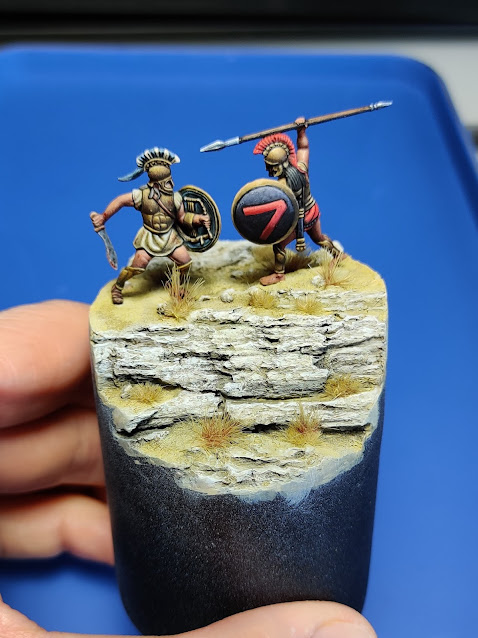 |
| Stones painted, larger tufts added and tufts integrated into the base... |
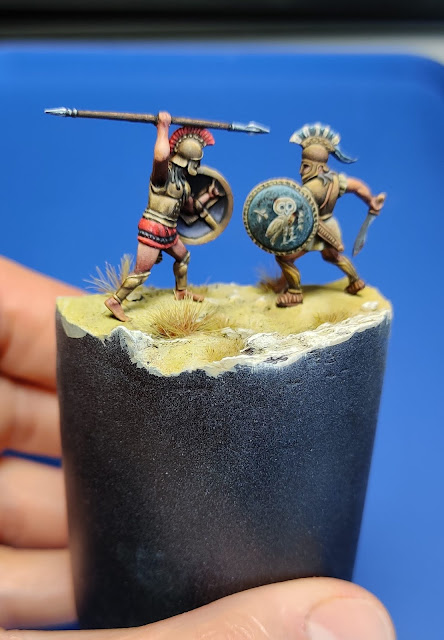 |
| ... and the (slightly blurred) rear view. |
The last steps to finalize everything was to paint the plinth a deep, matte black. I always use a cheap, acrylic hobby color for this. I slightly dilute the color with water and usually paint on three relatively thin layers with a large, soft, flat brush to achieve a clean and smooth finish.
I really like these simple, black plinths as they provide a stark contrast to the colors of the minis and base without taking any interest from what's actually going on in the scene. The black color signals very clearly where the actual scene ends - and for me it provides the perfect frame for the overall image.
The final step with every scene I build is to add a small signature to the back of the plinth:
And that was it, folks. Hope I could give you a small glimpse into the process and reasoning behind the individual steps of me building a base.
Let me know if you have questions. Looking forward to reading your comments. Talk to you soon!



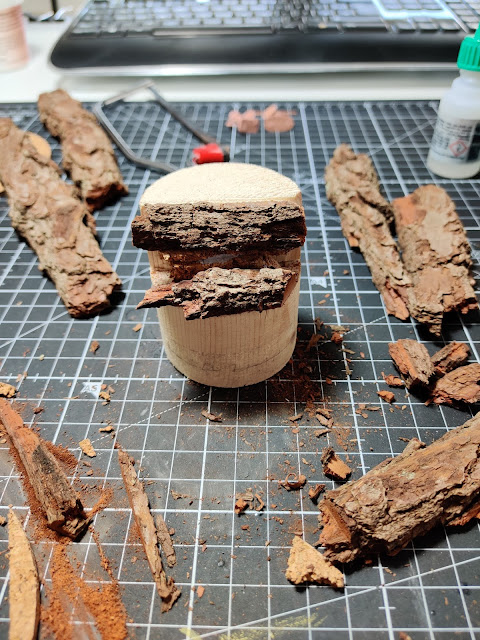
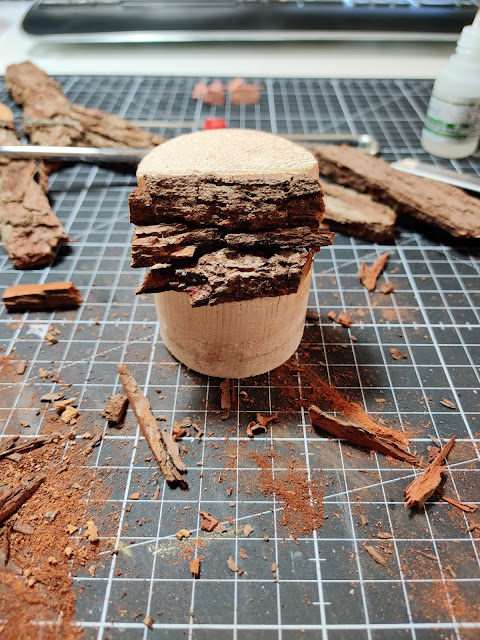
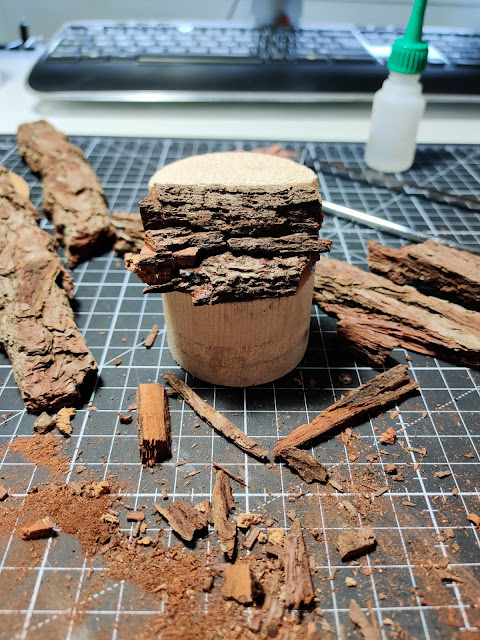
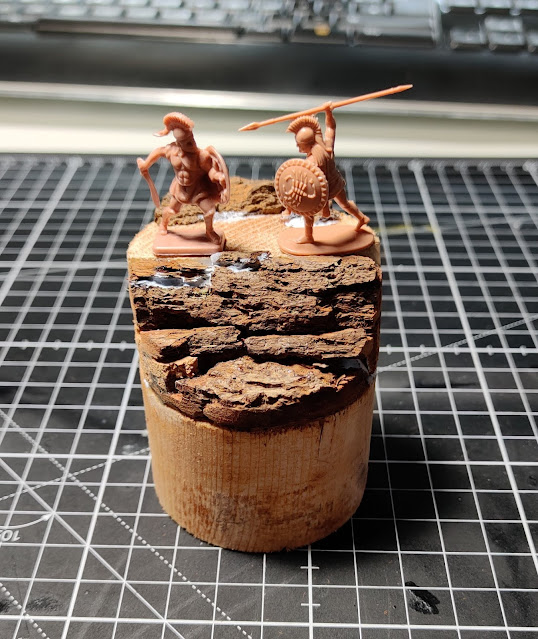
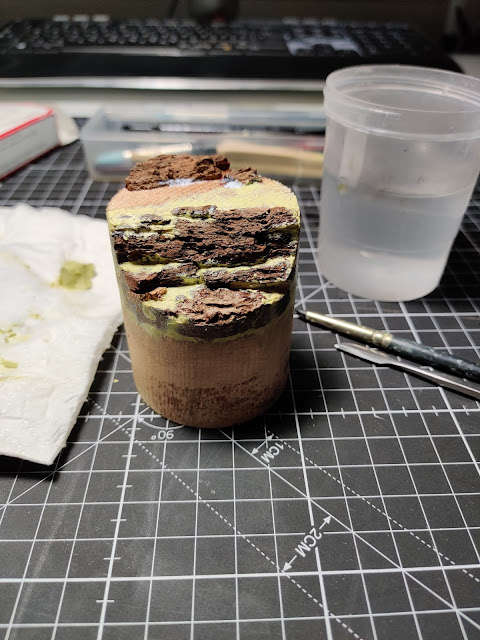
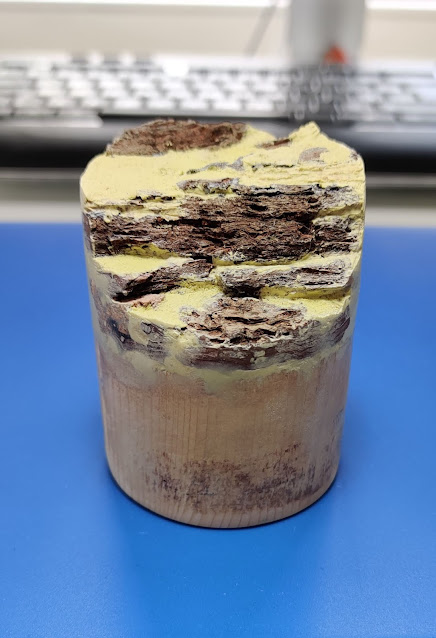
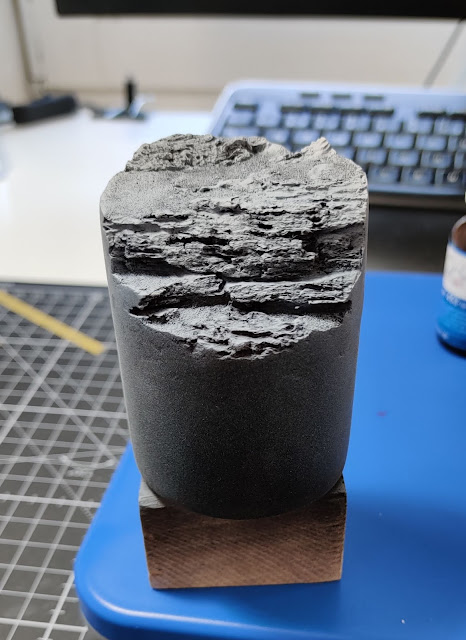
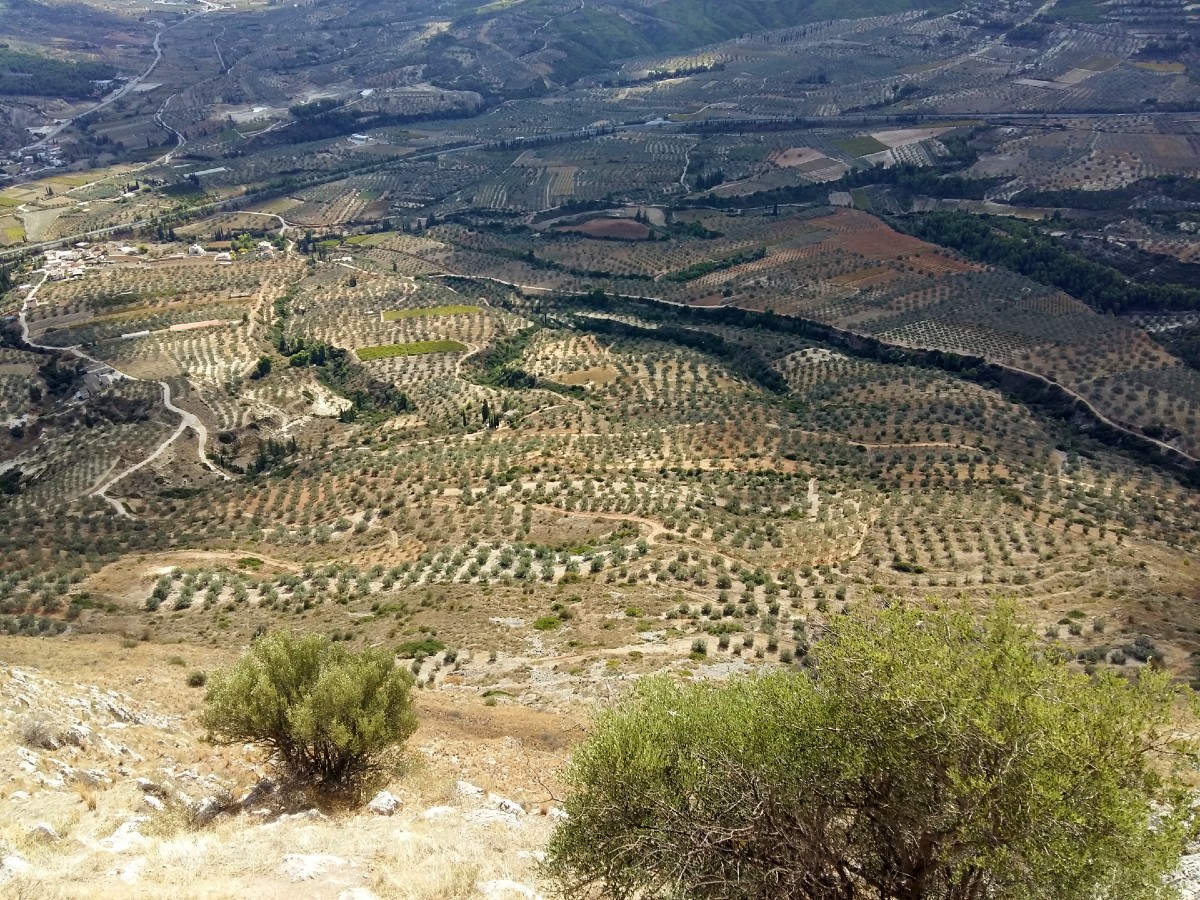
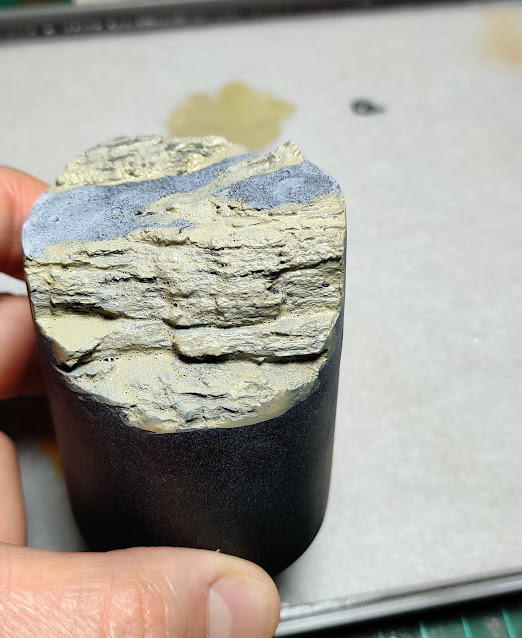





















Probably a real stupid question, but what kind of bark do you use?
@ Volodyuka: Thanks for the comment and no stupid question at all. Actually a very good question, but one that I cannot answer with much authority. I guess it's some kind of pine, but I am not sure.
Oh, Thanks for answering!
@ Volodyuka:
Maybe you visit a Model Railway store - they often sell bark as scenery pieces for dioramas.
By the way:
Great Tutorial, David - thank you!
@Thomas
Sadly no such thing in russia :( The next closest thing is to get to buy a slab at woodworking shop (quite expensive), or 50 liters bag of bark for gardening (cheap, but oh god, it's like one buy and you got yourself bark for the rest of the life)
Great diorama and really enjoyed the tutorial - thank you.
Tony
Thanks, all! Glad you find the tutorial helpful.
@ Volodyuka: I'd suggest three options - (1) go to the woods and pick up some bark lying on the forest floor; (2) as noted, I got my piece of bark from a florist - they sometimes have such bark as decoration for flower arrangements; (3) maybe somewhere close to your place there is a aquarium/terrarium store, they should have bark as "terrain" for animals. The nice thing with the latter option is that the bark most likely has been treated such that it won't have fungi/bacteria/vermin eggs, etc.
Good luck and let us know whether you found some suitable bark
Cheers, D.
@David
Oh! I kinda forgot about pet shops and there is like five of them relatively close, Thanks! Gonna hit them up in the next couple of days.
(also bark being treated against parasites and bacteria will be a nice thing, kinda did not want to have a bark on fire inside of my oven :) )
Excellent, Volodyuka! Make sure to send a few pics of what you're building with the bark (once you found them) over at our Facebook page!